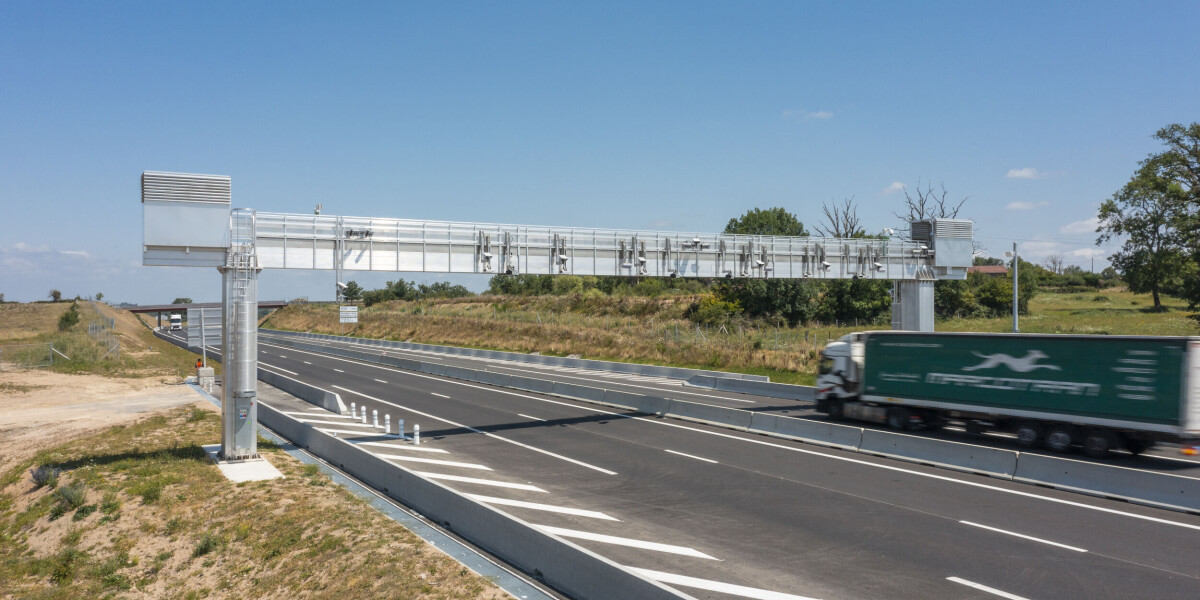
Motorists highlight issues with france’s first free-flow toll motorway
- Select a language for the TTS:
- UK English Female
- UK English Male
- US English Female
- US English Male
- Australian Female
- Australian Male
- Language selected: (auto detect) - EN
Play all audios:

AN 88-KILOMETRE SECTION OF THE A79 BETWEEN SAZARET AND DIGOIN USES TECHNOLOGY INSTEAD OF PHYSICAL TOLL BOOTHS TO CHARGE MOTORISTS. BUT THE SYSTEM IS NOT WITHOUT ITS CRITICS Motorists have
been highlighting alleged problems with France’s first motorway to introduce a free-flow toll system. The A79 is an 88km section of motorway between Sazaret (Allier, Auvergne-Rhône-Alpes)
and Digoin (Saône-et-Loire, Bourgogne-Franche-Comté), managed by motorway management network Autoroute de Liaison Atlantique Europe (ALIAE). Since the end of 2022, it has been using
technology to track whether motorists have paid to use the road, rather than physical toll booths. It’s claimed it improves traffic flow and is better for the environment as vehicles consume
less fuel by not having to stop at a toll booth. But users of the motorway have been telling consumer group UFC-QueChoisir of problems they have been encountering. Some said they felt the
payment systems were not explained properly, while others said that they were unable to pay online and had to call customer services. One woman, Sylvie, said: “There is very little
information [about how to pay] along the road during your journey. You have to be very alert to understand that you have to pay later.” Another user, Christian, said he was disappointed that
he was not given enough notice to be able to avoid the paying section of the road by using another route; while Geneviève even found that she was unable to pay her 30-cent payment due for
use of the road. She said: “[I was notified] that I had committed an infraction that could be fined by up to €90.” But, when she went online to pay, she found the website did not work. She
then had to call the customer services line and later sent a cheque. Those who do not pay risk a €90 fine. Jean-Claude commented that the in-person payment option was not particularly
efficient. He said: “How is this new system simpler, when it requires a stop in a car park, wasting time? Where are the energy savings when you have to look for a space, stop the engine and
start again?” HOW DOES FREE-FLOW TECHNOLOGY WORK? Free-flow technology removes the physical toll (péage) barriers on the road. Instead, infrared cameras installed on the road identify the
registration plate and vehicle, and automatically trigger the billing process. The car’s registered owner or driver is charged, rather than the driver having to physically pay at toll booths
(although paying at fixed-site machines on foot is an option, see below). Data is held according to GDPR laws and does not store card data or licence plate information for any other reason
than to charge for the journey. Data is deleted after payment. ALIAE only retains data relating to transactions, and does not store it with identifying licence plates. WHAT ARE THE BENEFITS
OF FREE-FLOW? A free-flow system has several benefits, ALIAE said. These include: * Better traffic flow, and less risk of traffic jams or delays * Reduced fuel consumption and fewer CO2
emissions (HGVs emit 3.1kg of extra CO2 emissions every time they stop at a barrier) * Reduction in stress when approaching tolls, improving safety and driving comfort. * Less soil
artificialisation (the estimated surface area required for a toll barrier is 16 hectares). HOW DO YOU PAY? There are four options: * Using a toll badge fixed onto your vehicle, to show your
subscription for regular use, with billing at month-end * By number plate subscription. Register your licence plate and card details on the aliae.com website. Payments are collected weekly.
* Via website after using the road. You have 72 hours to pay after using the road, by entering your licence number and card details on the ALIAE.com website. * At one of the ‘foot terminals’
along the motorway at rest stops and service stations. There are 16 along the motorway section. You can pay by bank card or cash. ACCIDENT-PRONE ROUTE The road is often used for long-haul
journeys from the French Atlantic coast to Germany, Switzerland, and Italy, via central France. Every day, it is used by 10,000 to 15,000 vehicles, of which 40% are heavy goods vehicles
(HGVs). ALIAE says that the new system is aiming to make the route safer, mainly by reducing stress, traffic jams, and the need to stop and start. This is a major priority, as the road is
one of the most accident-prone in France. Between 2008-2017, 124 people died in incidents between Montmarault and Mâcon. The system is already used successfully in other countries, including
the US, Spain, Austria, Brazil, Chile, Colombia, and India. There are also plans to introduce the system on other motorways in France in the next few years, including the A13-A14 (planned
for 2024) and the A69 (2025). RELATED ARTICLES HOW TO SAVE ON RISING MOTORWAY TOLLS IN FRANCE TOTALENERGIES TO CAP FUEL PRICES RATHER THAN OFFER DISCOUNTS IN FRANCE
